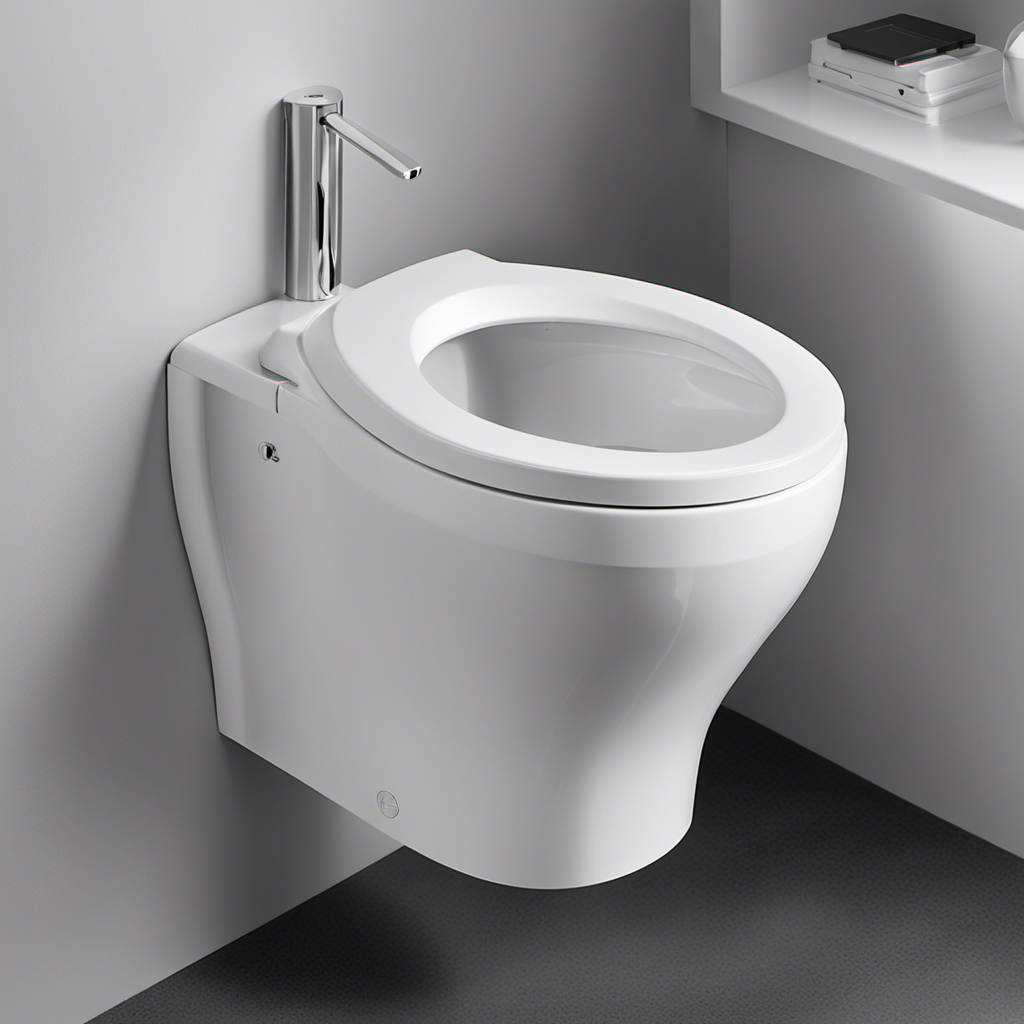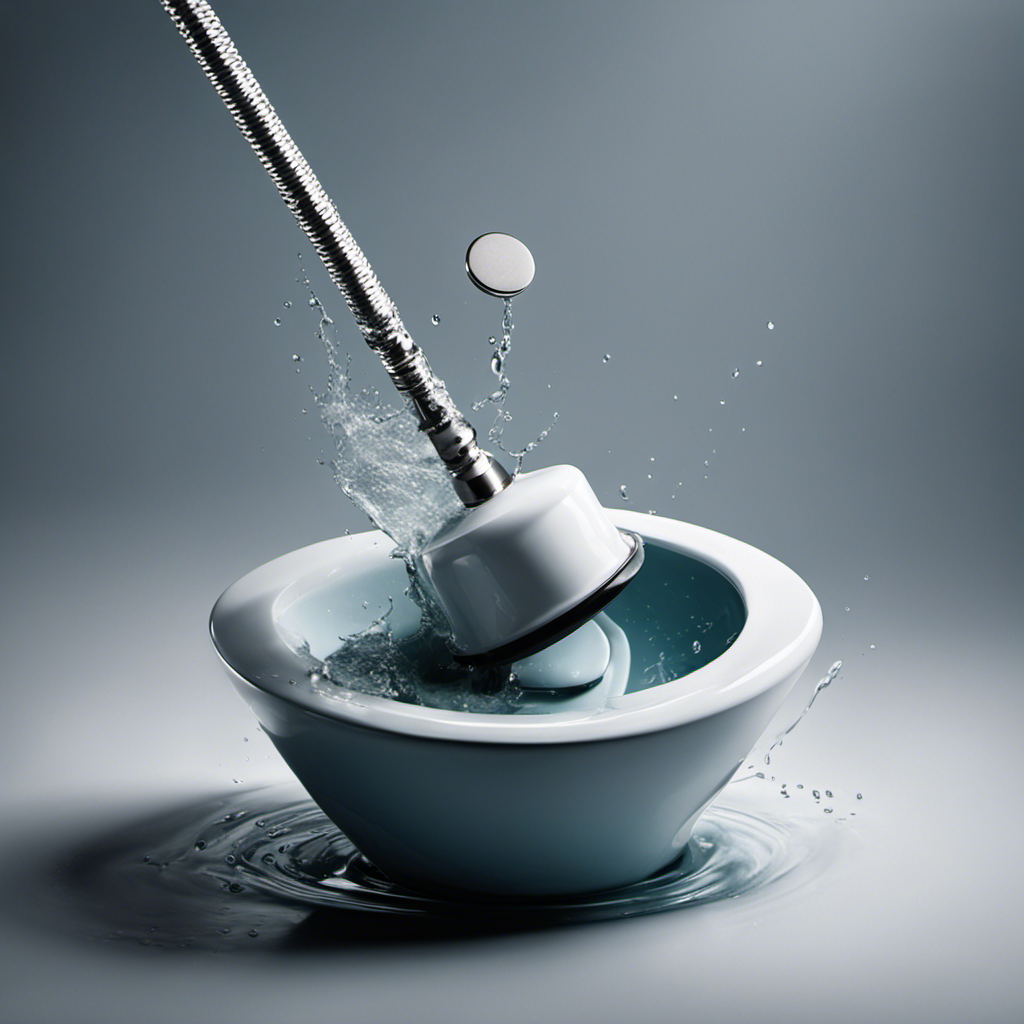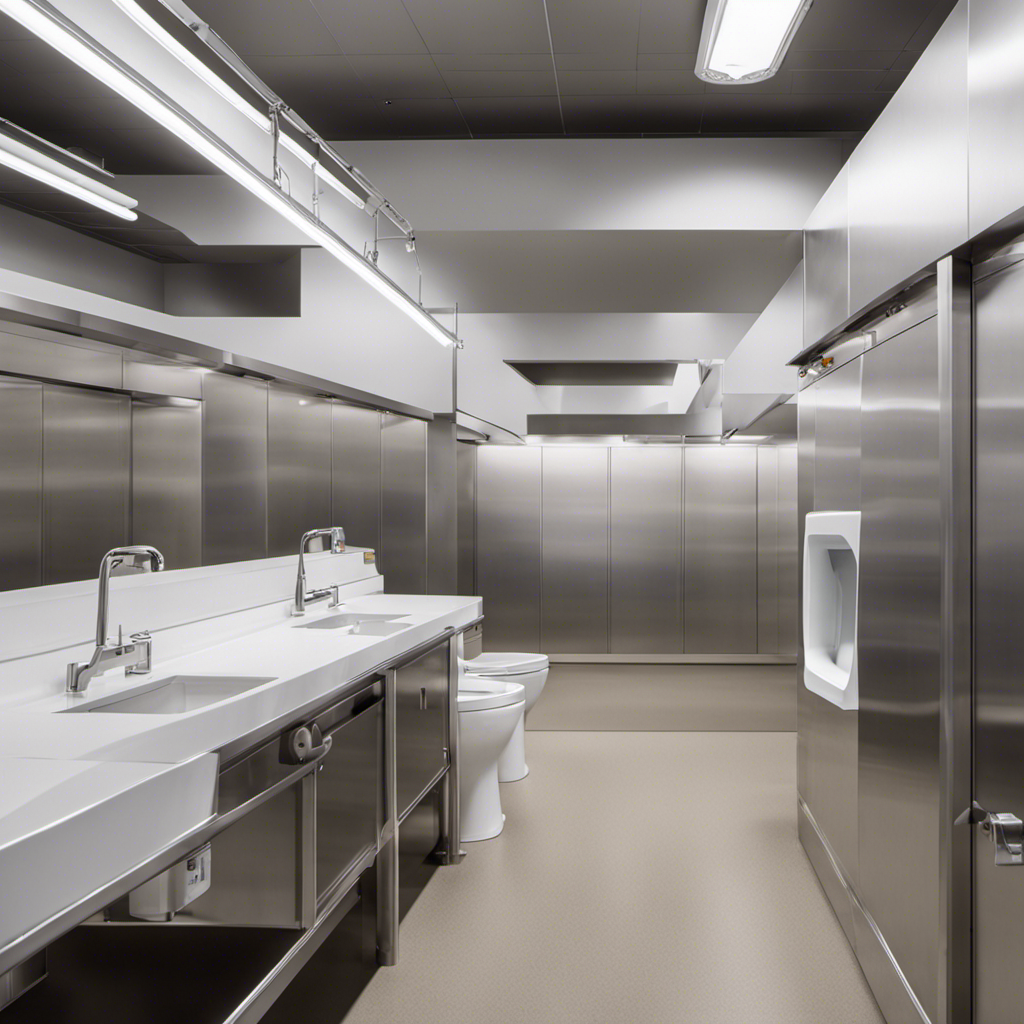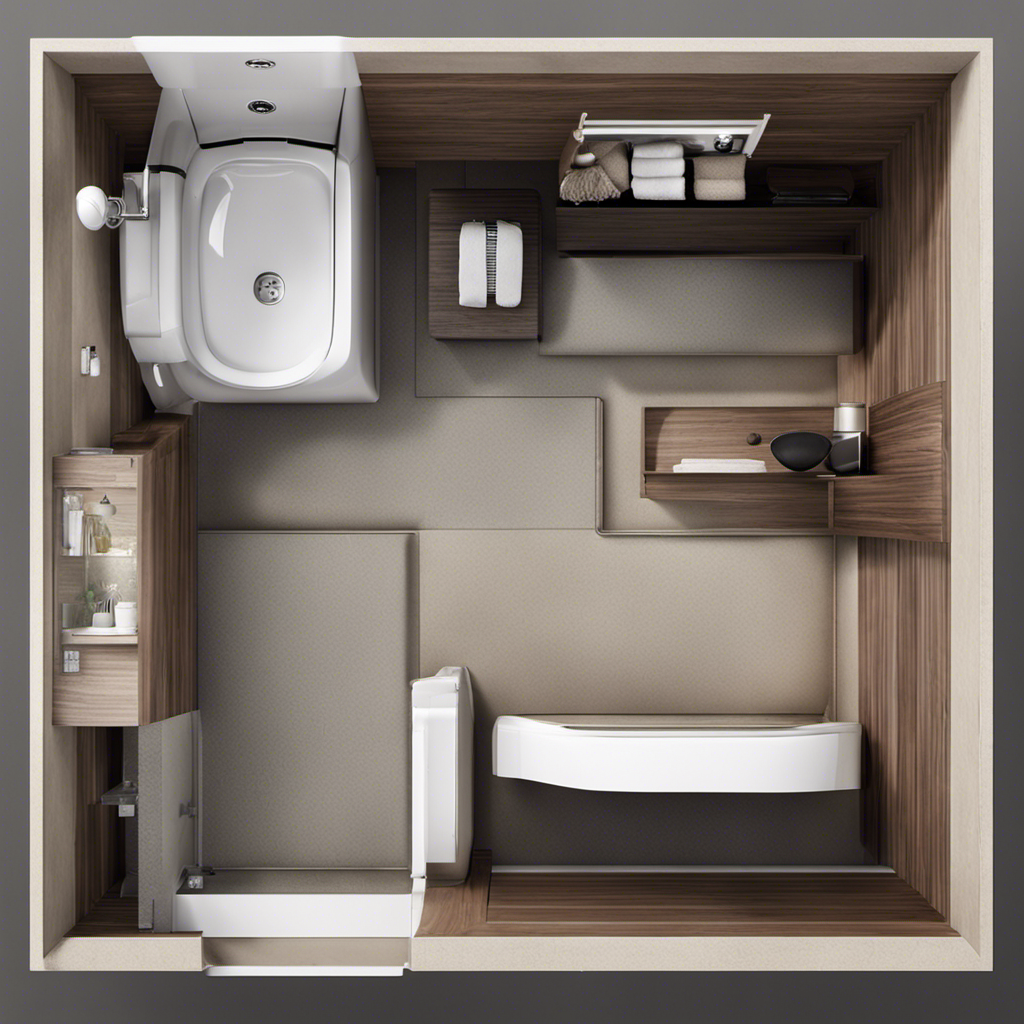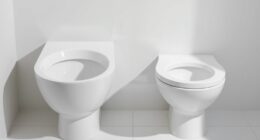As I stand in my bathroom, the sound of a running toilet echoes through the silence, a constant reminder of wasted water and potential damage. But fear not, for I have discovered the solution to this troublesome problem.
In this article, I will guide you through the steps to stop your toilet from running incessantly. By understanding the causes, checking for faulty components, and making necessary adjustments, you can put an end to this frustrating issue and restore peace to your bathroom.
Key Takeaways
- The causes of a running toilet can include a faulty flapper, a faulty fill valve, a loose or damaged flush valve, or a cracked toilet tank or bowl.
- Checking and replacing the faulty flapper is an important step in fixing a running toilet.
- Adjusting the float can help stop the constant flow of water in the toilet.
- Taking steps to prevent water wastage, such as repairing leaks and considering water-saving options like a dual flush toilet, is essential.
Understanding the Causes of a Running Toilet
Understanding the causes of a running toilet can help you troubleshoot and fix the issue. There are various factors that can lead to toilet leaks and common toilet issues.
One possible cause is a faulty flapper. The flapper is a rubber valve that controls the flow of water from the tank into the bowl. If it becomes worn out or damaged, it can result in a continuous flow of water, causing the toilet to run.
Other causes of toilet leaks include a faulty fill valve, a loose or damaged flush valve, or a cracked toilet tank or bowl. By identifying the specific cause of the running toilet, you can take the necessary steps to resolve the issue and prevent further water waste.
Now, let’s move on to checking for a faulty flapper.
Checking for a Faulty Flapper
To fix the issue, you’ll want to first check if the flapper is faulty. The flapper is a rubber valve located at the bottom of the toilet tank that controls the flow of water into the bowl. If it is not sealing properly, water will continuously leak into the bowl, causing the toilet to run.
To determine if the flapper is the problem, simply remove the tank lid and observe its condition. If it appears worn, cracked, or damaged in any way, it will need to be replaced. Luckily, flapper replacement is a relatively simple task that can be done by following a few steps. By replacing the faulty flapper, you can not only fix the issue but also save water, as newer flappers are designed with water-saving options.
Now, let’s move on to adjusting the float to stop the constant flow.
Adjusting the Float to Stop the Constant Flow
When it comes to stopping water wastage in a toilet, proper float adjustment is crucial. The float is responsible for regulating the water level in the tank and ensuring that it does not overflow.
Proper Float Adjustment
Adjusting the float is the key to stopping a running toilet. If you have already tried troubleshooting and found that the cause of the continuous flow is a faulty float, then it may be time for a float replacement.
This is a relatively simple task that can be done without the help of a professional plumber. First, turn off the water supply to the toilet. Then, remove the old float by unscrewing it from the fill valve.
Next, attach the new float to the fill valve and ensure it is securely fastened. Finally, turn on the water supply and test the toilet to see if the float adjustment has resolved the issue. By properly adjusting the float and replacing it if necessary, you can not only stop a running toilet but also contribute to water conservation.
Now, let’s move on to the next section about stopping water wastage.
Stopping Water Wastage
If you notice water continuously flowing in your toilet, you can prevent wastage by promptly addressing the issue. Water conservation is crucial for our environment, and taking steps to stop water wastage can make a significant difference.
Here are four eco-friendly solutions to help you conserve water:
-
Check the flapper valve: A worn-out or misaligned flapper valve can cause water to continuously flow into the toilet bowl. By replacing or readjusting the flapper valve, you can prevent water from being wasted.
-
Adjust the water level: The water level in the toilet tank should be set at the appropriate height to avoid unnecessary water consumption. Adjusting the water level can help conserve water and reduce wastage.
-
Repair leaks: Leaks in the toilet tank or bowl can result in constant water flow. Inspect for any leaks and promptly repair them to prevent water wastage.
-
Upgrade to a dual flush toilet: Dual flush toilets allow you to choose between a full flush for solid waste and a half flush for liquid waste. This feature helps minimize water usage and promotes water conservation.
Fixing a Leaky Fill Valve
To fix a leaky fill valve, you’ll need to tighten the locknut on the valve. The fill valve is responsible for regulating the flow of water into the toilet tank. When it becomes leaky, it can cause water wastage and an annoying running sound.
Before tightening the locknut, it’s important to first turn off the water supply to the toilet. This can usually be done by turning the shut-off valve located behind or near the toilet.
Once the water is off, locate the locknut on the fill valve and use a wrench to tighten it. If tightening the locknut doesn’t stop the leak, it may be necessary to replace the fill valve altogether. This can be done by following the manufacturer’s instructions or seeking the help of a professional plumber.
Remember to always adjust water pressure accordingly to prevent future leaks.
Cleaning or Replacing the Flush Valve
When cleaning or replacing the flush valve, you’ll need to:
- Remove the tank lid and locate the valve at the bottom of the tank.
Here are some troubleshooting tips and cleaning techniques to help you with this task:
-
Inspect the flush valve for any visible signs of damage or wear. If you notice any cracks or leaks, it’s time to replace the valve.
-
Use a wrench to loosen the nuts that hold the flush valve in place. Carefully remove the old valve, making sure not to damage any surrounding parts.
-
Clean the area around the flush valve with a mild detergent and a soft cloth. This will help remove any built-up residue or debris that may be causing the valve to malfunction.
-
When installing the new flush valve, make sure to tighten the nuts securely. Test the flush valve by flushing the toilet and checking for any leaks.
Repairing the Overflow Tube to Prevent Continuous Water Flow
To repair the overflow tube and prevent continuous water flow, you can adjust the fill valve’s height. This is a common issue that can cause a toilet to keep running even after flushing.
The fill valve is responsible for regulating the water level in the tank. If it is set too high, water will continuously flow into the overflow tube and down the drain.
To fix this, locate the fill valve, which is usually on the left-hand side of the tank. Adjust the height by turning the adjustment screw or rotating the float cup.
Test the water level by flushing the toilet and see if it stops running. If the problem persists, you may need to replace the flapper, which is another common cause of continuous water flow.
Troubleshooting Persistent Running Issues
To troubleshoot persistent running issues in a toilet, there are two key points to focus on: identifying the water supply and checking the flapper valve.
First, I’ll locate the water supply valve near the base of the toilet and ensure it’s fully open.
Then, I’ll inspect the flapper valve, which is responsible for controlling the water flow, for any signs of damage or misalignment.
Identify Water Supply
Check if the water supply valve is fully open before attempting to fix the running toilet. Identifying water pressure and locating the shut off valve are crucial steps in resolving this issue. To help you understand the importance of this, let me provide you with a list of potential consequences if these steps are neglected:
- Water leakage can lead to costly water bills, causing financial stress.
- Excessive water waste can harm the environment, triggering feelings of guilt or concern.
- Continuous running can disrupt sleep, leading to frustration and irritability.
- The constant sound of running water can cause anxiety or discomfort.
By properly identifying water pressure and locating the shut off valve, you can avoid these negative emotions and address the root cause of the problem.
Now, let’s move on to the next step: checking the flapper valve.
Check Flapper Valve
To continue our investigation into why a toilet may be running, the next step is to check the flapper valve.
The flapper valve is located at the bottom of the toilet tank and is responsible for controlling the flow of water into the toilet bowl. If the flapper valve is worn out or damaged, it can cause water to continuously leak into the bowl, resulting in a running toilet.
To check the flapper valve, remove the tank lid and inspect the condition of the flapper. If it appears cracked, warped, or worn, it will need to be replaced. Flapper replacement is a common toilet repair that can easily be done using a few basic tools and a new flapper valve.
Frequently Asked Questions
Can I Use Any Type of Flapper to Fix a Running Toilet?
Yes, you can use different types of flappers to fix a running toilet. There are various flapper alternatives available, such as universal flappers or specific ones for certain toilet brands.
How Do I Know if the Fill Valve Needs to Be Replaced or Just Cleaned?
To determine if the fill valve needs replacing or cleaning, check for common toilet problems like water continuously running, weak flush, or no water filling the tank. Troubleshooting the fill valve can help identify the issue.
What Should I Do if the Toilet Is Still Running After Adjusting the Float?
If the toilet is still running after adjusting the float, I would check the toilet overflow and water level. It is important to ensure that the water level is not too high, as this can cause continuous running.
Is It Possible to Fix a Running Toilet Without Replacing Any Parts?
It’s possible to fix a running toilet without replacing parts. A few alternative methods involve adjusting the flapper, checking the chain length, or cleaning the valve seat. However, be cautious of common mistakes that can worsen the issue.
How Can I Determine if the Overflow Tube Is the Cause of the Continuous Water Flow?
To determine if the overflow tube is causing continuous water flow, I troubleshoot the fill valve first. By adjusting the water level and inspecting for leaks, I can identify if the overflow tube needs attention.
Conclusion
In conclusion, fixing a running toilet can be a simple task that anyone can tackle.
By understanding the common causes, such as a faulty flapper or a leaky fill valve, you can easily identify and resolve the issue.
Adjusting the float, cleaning or replacing the flush valve, and repairing the overflow tube are all effective solutions to stop the constant flow of water.
With a little troubleshooting, you can put an end to the persistent running problems and enjoy a properly functioning toilet.

